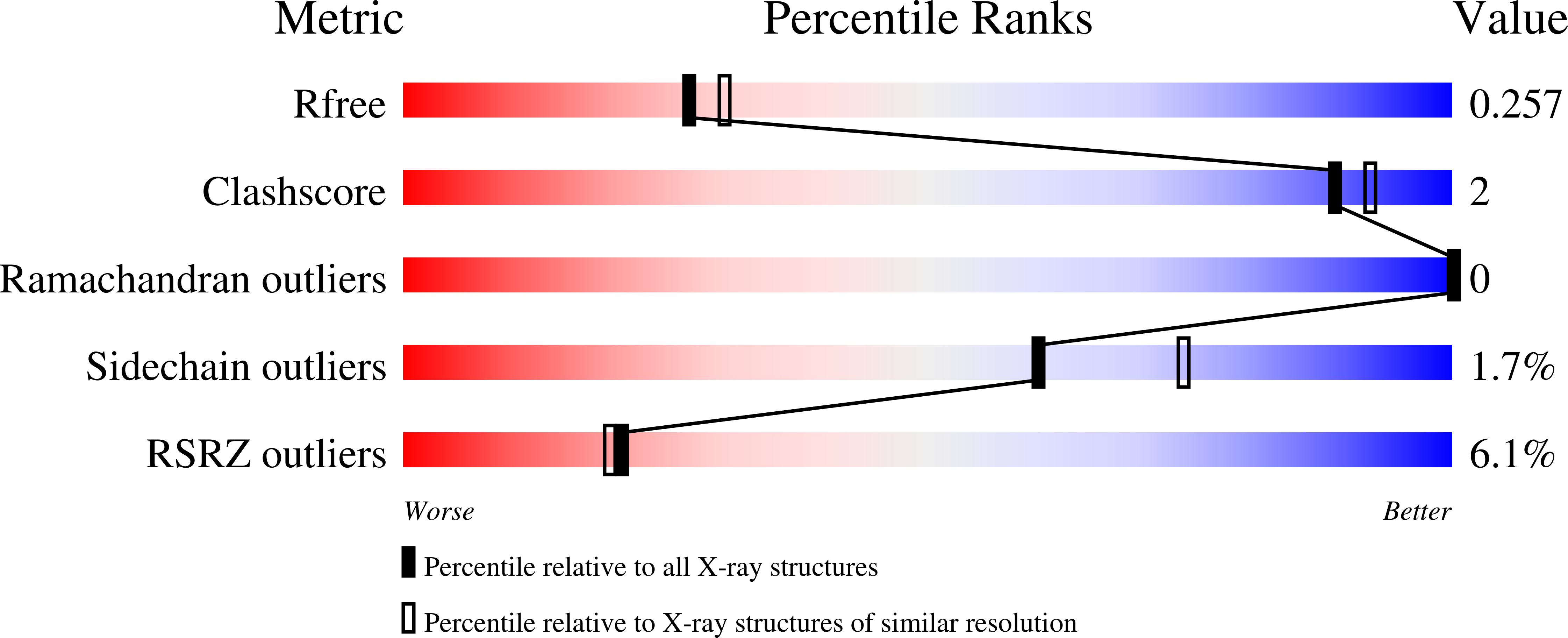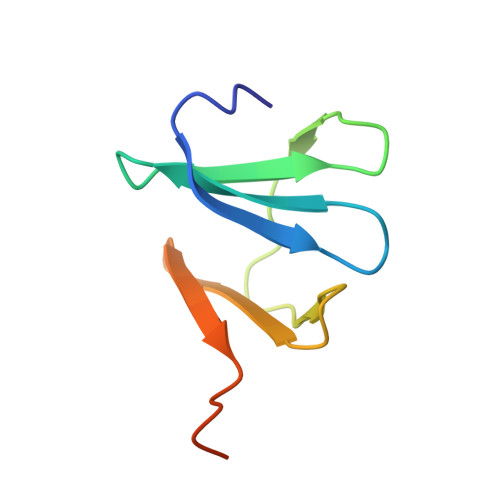Unprecedented binding cooperativity between Cu(I) and Cu(II) in the copper resistance protein CopK from Cupriavidus metallidurans CH34: implications from structural studies by NMR spectroscopy and X-ray crystallography
Chong, L.X., Ash, M.-R., Maher, M.J., Hinds, M.G., Xiao, Z., Wedd, A.G.(2009) J Am Chem Soc 131: 3549-3564
- PubMed: 19236095
- DOI: https://doi.org/10.1021/ja807354z
- Primary Citation of Related Structures:
3DSO, 3DSP - PubMed Abstract:
The bacterium Cupriavidus metallidurans CH34 is resistant to high environmental concentrations of many metal ions, including copper. This ability arises primarily from the presence of a large plasmid pMOL30 which includes a cluster of 19 cop genes that respond to copper. One of the protein products CopK is induced at high levels and is expressed to the periplasm as a small soluble protein (8.3 kDa). Apo-CopK associates in solution to form a dimer (K(D) approximately 10(-5) M) whose structure was defined by NMR and X-ray crystallography. The individual molecules feature two antiparallel beta-sheets arranged in a sandwich-like structure and interact through C-terminal beta-strands. It binds Cu(II) with low affinity (K(D)(Cu(II)) > 10(-6) M) but Cu(I) with high affinity (K(D)(Cu(I)) = 2 x 10(-11) M). Cu(I)-CopK was also a dimer in the solid state and featured a distorted tetrahedral site Cu(I)(S-Met)(3)(NCS). The isothiocyanato ligand originated from the crystallization solution. Binding of Cu(I) or Ag(I), but not of Cu(II), favored the monomeric form in solution. While Ag(I)-CopK was stable as isolated, Cu(I)-CopK was moderately air-sensitive due to a strong binding cooperativity between Cu(I) and Cu(II). This was documented by determination of the Cu(I) and Cu(II) binding affinities in the presence of the other ion: K(D)(Cu(I)) = 2 x 10(-13) M and K(D)(Cu(II)) = 3 x 10(-12) M, that is, binding of Cu(II) increased the affinity for Cu(I) by a factor of approximately 10(2) and binding of Cu(I) increased the affinity for Cu(II) by a factor of at least 10(6). Stable forms of both Cu(I)Cu(II)-CopK and Ag(I)Cu(II)-CopK were isolated readily. Consistent with this unprecedented copper binding chemistry, NMR spectroscopy detected three distinct forms: apo-CopK, Cu(I)-CopK and Cu(I)Cu(II)-CopK that do not exchange on the NMR time scale. This information provides a valuable guide to the role of CopK in copper resistance.
Organizational Affiliation:
School of Chemistry and, Biomolecular Science and Biotechnology Institute, University of Melbourne, Parkville, Victoria 3010, Australia.














